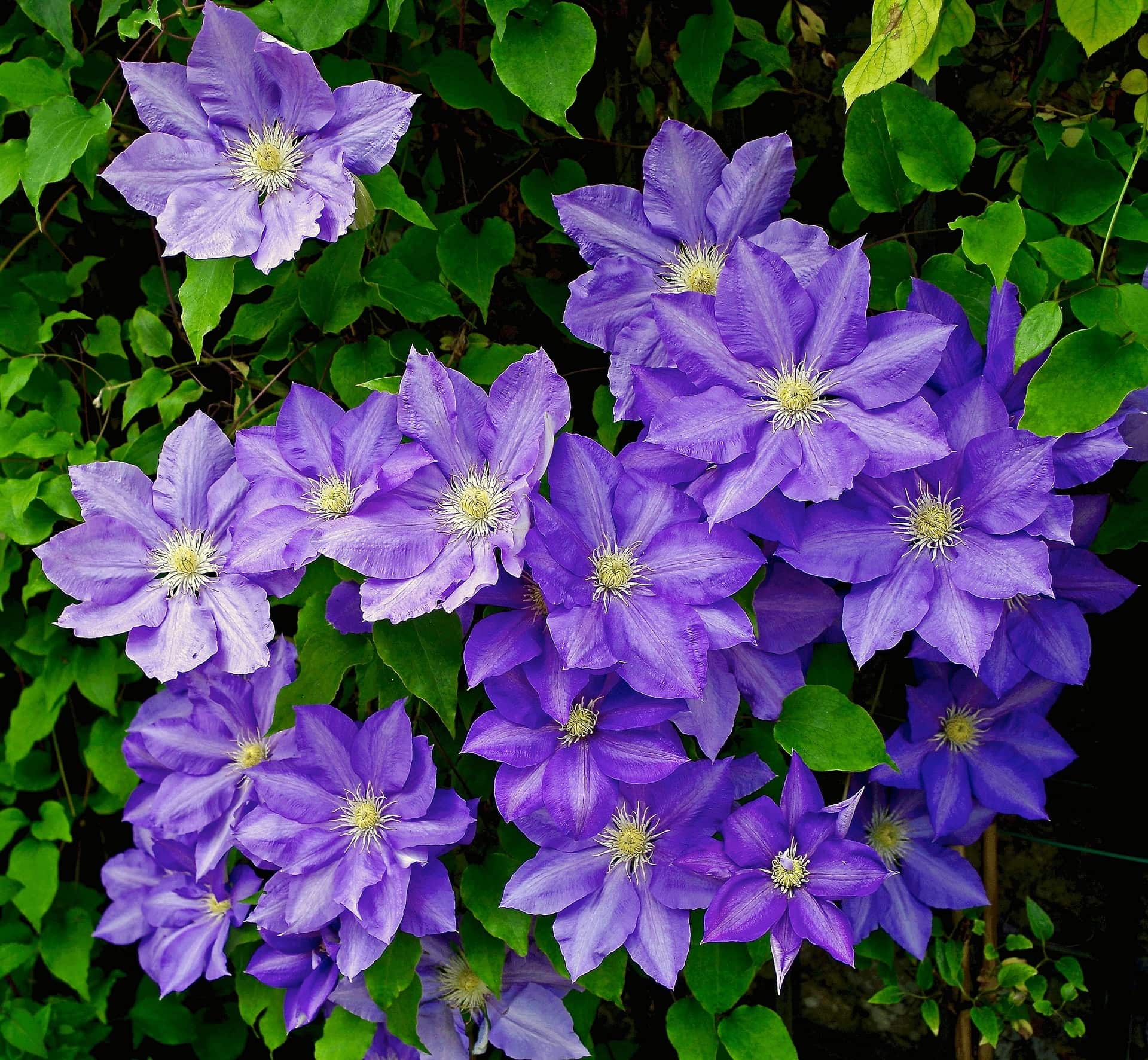Clematis tend to be fairly hardy plants, there is not a lot you can do to actually kill it, but they are prone to some diseases and especially to drying out. Reviving a Clematis is possible but only if you know why it is suffering in the first place, doing the wrong thing while the plant is stressed out might actually kill it.
To revive a Clematis make sure to understand why it is dying in the first place. In case it is drying out, it can be revived by simply watering it. If it is dying because it has been overwatered then let the soil dry out. Usually, the easiest way of reviving a Clematis, no matter why it is dying, is to prune it, this will promote new growth and the plant will recover in a couple of weeks or months.
If your Clematis is suffering from Clematis wilt, then my personal recommendation is to use a liquid copper fungicide Click here to check it out on Amazon.com
Matured Clematis are a lot easier to revive than young plants, mostly because the young plants simply lack the necessary energy to put on new growth and will eventually dry out. The good news is that as long as the roots of the Clematis are still healthy then you will be able to revive it, but if the roots are rotten then there is nothing that can bring the plant back. Under certain conditions, Clematis can lose all their leaves but this rarely means that the plant is actually dead.
Keep in mind that reviving a Clematis takes time, and sometimes the plant might look completely dead only for some new growth to appear after 2-3 months. If you are not sure that your Clematis is dead or alive then check out my recent article Is My Clematis Dead? ( Top 9 Things To Check For ).
How To Revive A Clematis
To revive a struggling or wilted clematis, there are several steps you can take. First, ensure that the plant is receiving the proper amount of water. Clematis prefers consistently moist, well-drained soil, so check the moisture level and adjust your watering accordingly. If the soil is dry, water the plant deeply and provide mulch around the base to help retain moisture. Next, assess the amount of sunlight the clematis is receiving. Most varieties thrive in full sun to partial shade, so make sure it is in an appropriate location.
Prune away any dead or damaged parts of the plant to encourage new growth. If the clematis has become tangled or overgrown, you can also perform a more drastic pruning to rejuvenate the plant. Finally, consider applying a balanced fertilizer specifically formulated for flowering plants to provide the necessary nutrients.
Earn a 50% Commission on each sale by simply sharing my guides with friends and family on social media, check out Flower Duty Affiliates
Revive The Clematis By Watering It
One of the most common reasons why Clematis tend to die is because they do not get enough water. Usually, you can revive a Clematis by simply watering it for a couple of days, and if the plant is suffering from lack of water then it will perk up in a matter of hours. The only time when you should not try to revive the Clematis by watering it is if it is suffering from Clematis wilt or if the roots have already started to rot.
Both of these are usually a sign of overwatering and giving them extra water will actually make things a lot worse. If your Clematis is wilting then check out my recent article Wilting Clematis ( Top 8 Most Common Reasons ).
Revive The Clematis By Letting The Soil Dry Out
In case the Clematis is suffering from overwatering then you have to let the soil dry out. Waterlogged soil can take some while to dry out, but you should allow 1-2 weeks for it to do so. If the roots of the Clematis are constantly in water then they will sooner or later rot, and once the roots are rotten the entire plant will die. If you have already tried to revive your Clematis by giving it some water, and it didn’t perk up but started to wilt even more then there is a high chance that it is suffering from overwatering. If you have overwatered your Clematis then check out my recent article Overwatered Clematis ( Top 5 Signs And Remedies ).
Revive The Clematis Suffering From Clematis Wilt
Clematis wilt is a disease caused by a fungus, if the plant is not treated then it is usually deadly. If your Clematis is suffering from Clematis wilt, you can still revive it, and your first step should be to prune the plant hard. Pruning alone will not get rid of Clematis wilt, because this disease spreads way too fast. The fungus that is causing Clematis wilt thrives in humid environments, take the high humidity out of the equation and the fungus will not be able to survive.
Usually, it is a good idea to replant the Clematis, because if a fungus is growing on it then the area where it is growing has poor air circulation and high humidity. In addition to this, you can also use a fungicide to get rid of Clematis wilt, but make sure to replant it in a well ventilated area, or else the wilt will come back.
Revive The Clematis With A Plastic Bottle
Newly transplanted Clematis are prone to drying out and being eaten by slugs and snails. Usually, Clematis will survive even if most of their leaves will get eaten but if the new growth is constantly eaten then the plant will sooner or later die. By placing a plastic bottle on top of the Clematis you will protect it from drying out, as the bottle will tarp most of the moisture inside.
If you have tried everything in order to revive the Clematis, and nothing worked then try the plastic bottle method. Once you place the plastic bottle on top of the Clematis, you will notice water droplets forming on the inside of the bottle in a matter of minutes, if this happens then you have set up the plastic bottle correctly. Make sure to get rid of the bottle cap, this way the plant will get some fresh air, but most of the moisture will still be trapped inside.
The plastic bottle also ensures that there is some moisture around the roots of the Clematis, which these plants do love, and as a bonus, it also protects them from pests. Once the plant starts to recover and some of the leaves are touching the bottle, it is time to remove the bottle, or else mold might start growing in it.
Pruning The Clematis Will Revive It
No matter what your Clematis is suffering from, it is usually a good idea to prune it. Sometimes plants try to hold on to their leaves which are no longer functional, and at that point, the plants are wasting precious energy. By pruning the Clematis, you simply force it to grow new leaves, which usually will be strong and healthy. Make sure to prune off all the dead and dead looking parts of the Clematis, and new growth will appear in a couple of weeks.
In certain cases, you will have to prune the Clematis back to the ground, and as long as the roots are still healthy you will see new growth in a matter of weeks.
Revive A Root Bound Clematis
Clematis that are growing in pots tend to get root bound, the first symptom is that the plant will not flower, after which it will slowly start losing its leaves, to a point where the entire plant might die. Just keep in mind that rootbound Clematis are usually suffering in silence as the damage from being rootbound tends to occur fairly slowly. As the roots of the Clematis are constantly growing they will sooner or later start to go in circles on the bottom of the pot.
If this root growth is left unchecked, then the plant might actually choke to death by its own roots. If your Clematis is suffering from being root bound then, you should cut off the excess roots, and repot it, hopefully in a larger pot. If you want to plant the Clematis from a container in the garden, then make sure to cut off the roots that are going in circles, or make some cuts on the side of the soil in which the plant is growing.
Both these actions will kickstart the process of growing new roots which will not go in circles. If you plant the Clematis that has roots growing in circles into the ground then the roots will keep going in circles for a long time, usually, this means that the growth of the plant will be stunted for at least a couple of years.
Key Takeaways
- To revive a Clematis, give it some water if it is thirsty, let the soil dry out if it has been overwatered, prune it, place a plastic bottle on top of it, and replant it.
- Before trying to revive the Clematis make sure to understand why it is dying in the first place.
- One of the most common reasons why Clematis tend to die is because they dry out.

